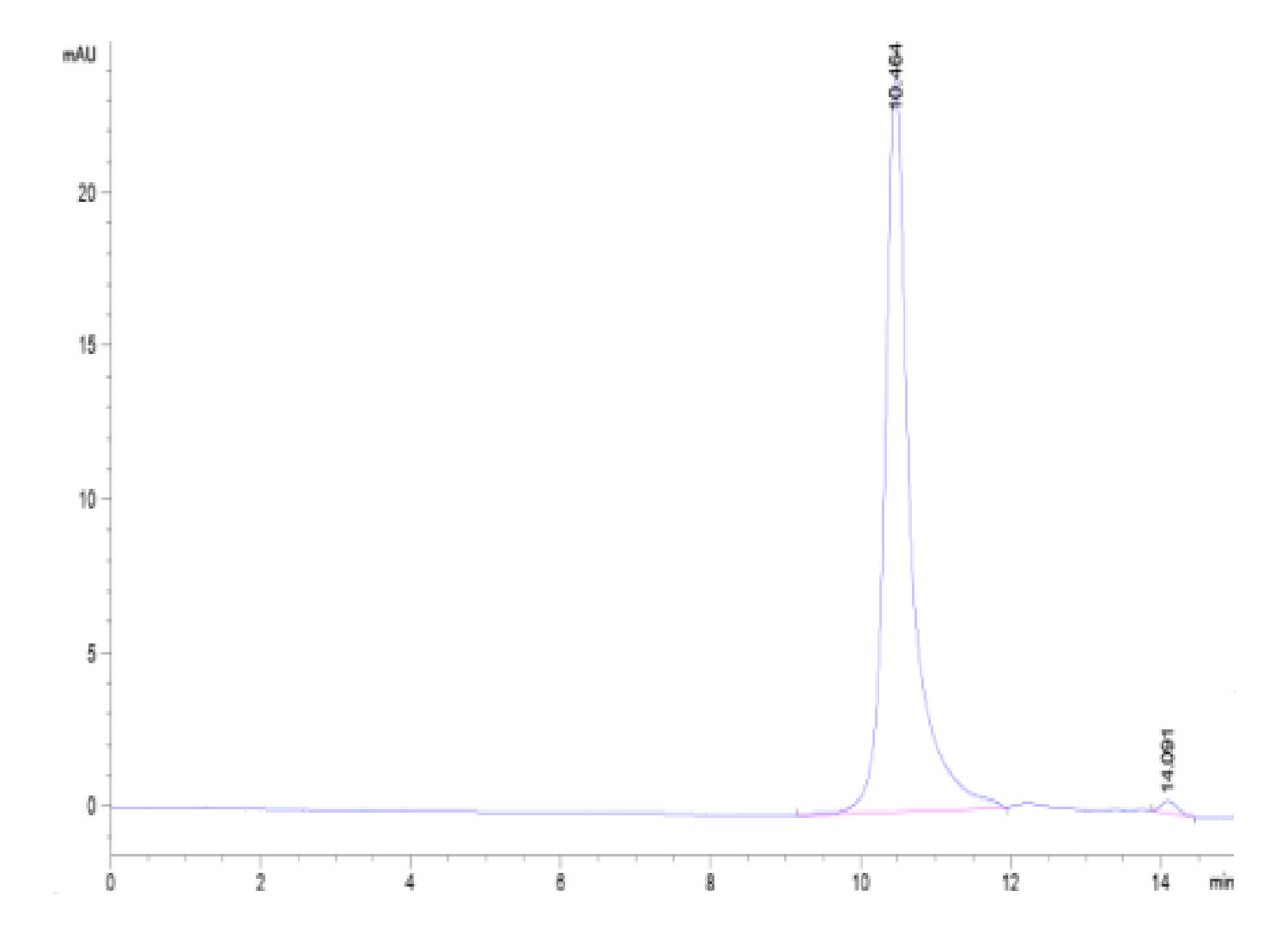| Weight | 1 lbs |
|---|---|
| Dimensions | 9 × 5 × 2 in |
| accession | NP_056196 |
| express system | E.coli |
| product tag | N-His |
| purity | > 95% as determined by Tris-Bis PAGE;> 95% as determined by HPLC |
| background | FAM19A5 is a secretory protein that is predominantly expressed in the brain. Although the FAM19A5 gene has been found to be associated with neurological and/or psychiatric diseases, only limited information is available on its function in the brain. FAM19A5 plays a role in nervous system development from an early stage and increases its expression in response to pathological conditions in subsets of neurons and OPCs of the brain. |
| molecular weight | The protein has a predicted MW of 10.79 kDa. The protein migrates to 13-14 kDa based on Tris-Bis PAGE result. |
| available size | 100 µg, 500 µg |
| endotoxin | Less than 1EU per μg by the LAL method. |
Human FAM19A5 Protein 3017
$315.00 – $1,050.00
Summary
- Expression: E.coli
- Pure: Yes (HPLC)
- Amino Acid Range: Thr37-Ser125
Human FAM19A5 Protein 3017
| protein |
|---|
| Size and concentration 100, 500µg and liquid |
| Form Liquid |
| Storage Instructions Valid for 12 months from date of receipt when stored at -80°C. Recommend to aliquot the protein into smaller quantities for optimal storage. Please minimize freeze-thaw cycles. |
| Storage buffer Shipped with dry ice. |
| Purity > 95% as determined by Tris-Bis PAGE |
| target relevance |
|---|
| FAM19A5 is a secretory protein that is predominantly expressed in the brain. Although the FAM19A5 gene has been found to be associated with neurological and/or psychiatric diseases, only limited information is available on its function in the brain. FAM19A5 plays a role in nervous system development from an early stage and increases its expression in response to pathological conditions in subsets of neurons and OPCs of the brain. |
| Protein names Chemokine-like protein TAFA-5 |
| Protein family TAFA family |
| Mass 14301Da |
| Function Acts as a chemokine-like protein by regulating cell proliferation and migration through activation of G protein-coupled receptors (GPCRs), such as S1PR2 and FPR2 (By similarity). Stimulates chemotactic migration of macrophages mediated by the MAPK3/ERK1 and AKT1 pathway (By similarity). Blocks TNFSF11/RANKL-induced osteoclast formation from macrophages by inhibiting up-regulation of osteoclast fusogenic and differentiation genes (By similarity). Stimulation of macrophage migration and inhibition of osteoclast formation is mediated via GPCR FPR2 (By similarity). Acts as an adipokine by negatively regulating vascular smooth muscle cell (VSMC) proliferation and migration in response to platelet-derived growth factor stimulation via GPCR S1PR2 and G protein GNA12/GNA13-transmitted RHOA signaling (By similarity). Inhibits injury-induced cell proliferation and neointima formation in the femoral arteries (By similarity). {ECO:0000250|UniProtKB:M0R7X9, ECO:0000250|UniProtKB:Q91WE9}. |
| Subellular location Secreted {ECO:0000269|PubMed:15028294, ECO:0000269|PubMed:29453251}. |
| Tissues Expressed in the subcutaneous and perirenal adipose tissue (at protein level) (PubMed:29453251). Highly expressed in adipose tissue with moderate expression in the brain and ovary (PubMed:29453251). Isoform 2: Brain-specific (PubMed:15028294). {ECO:0000269|PubMed:15028294, ECO:0000269|PubMed:29453251}. |
| Target Relevance information above includes information from UniProt accession: Q7Z5A7 |
| The UniProt Consortium |
Data
 |
| The purity of Human FAM19A5 is greater than 95% as determined by SEC-HPLC. |
 |
| Human FAM19A5 on Tris-Bis PAGE under reduced condition. The purity is greater than 95%. |
Publications
Publications
| pmid | title | authors | citation |
|---|---|---|---|
| We haven't added any publications to our database yet. | |||
Protocols
| relevant to this product |
|---|
Documents
| # | ||
|---|---|---|
| Please enter your product and batch number here to retrieve product datasheet, SDS, and QC information. | ||














